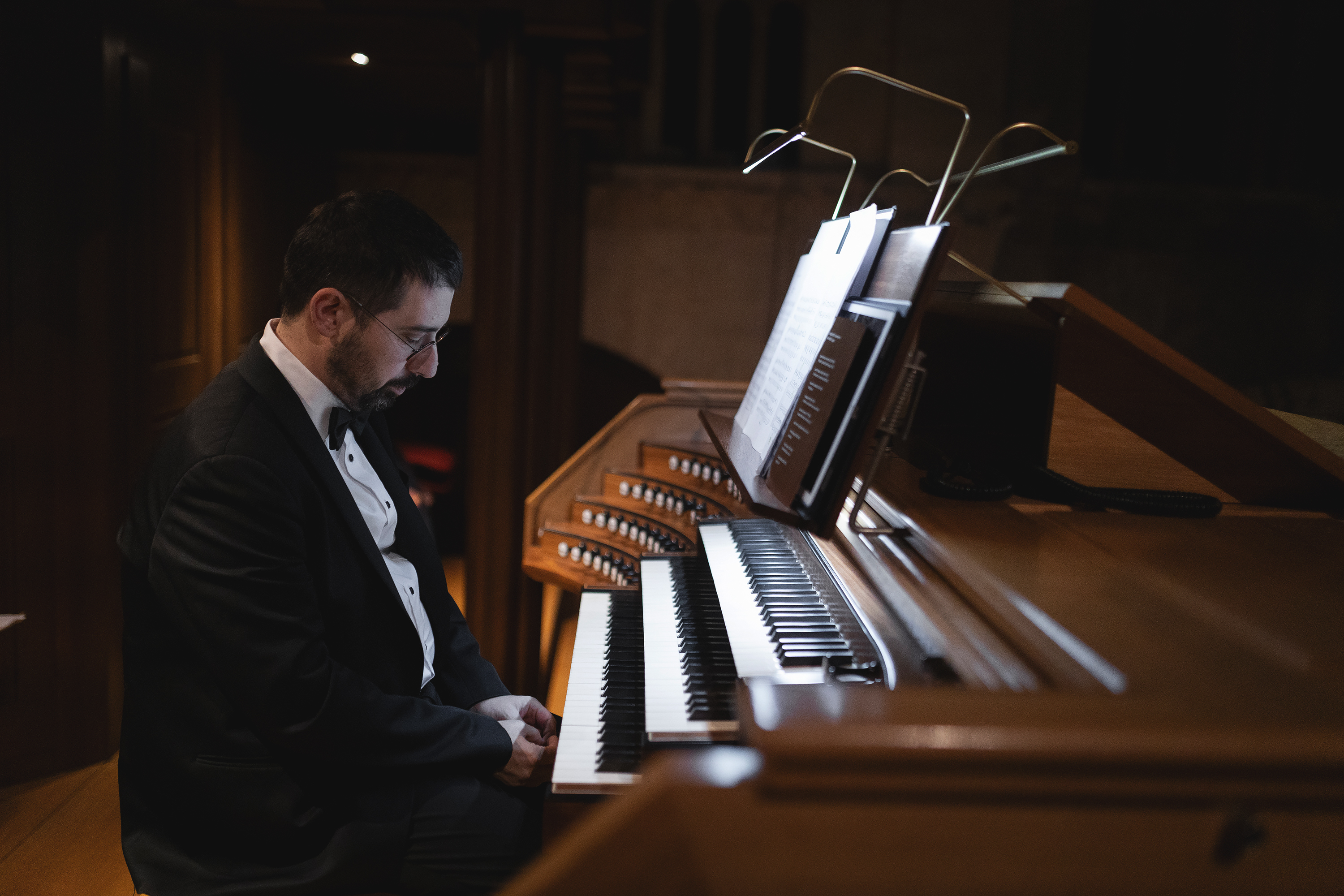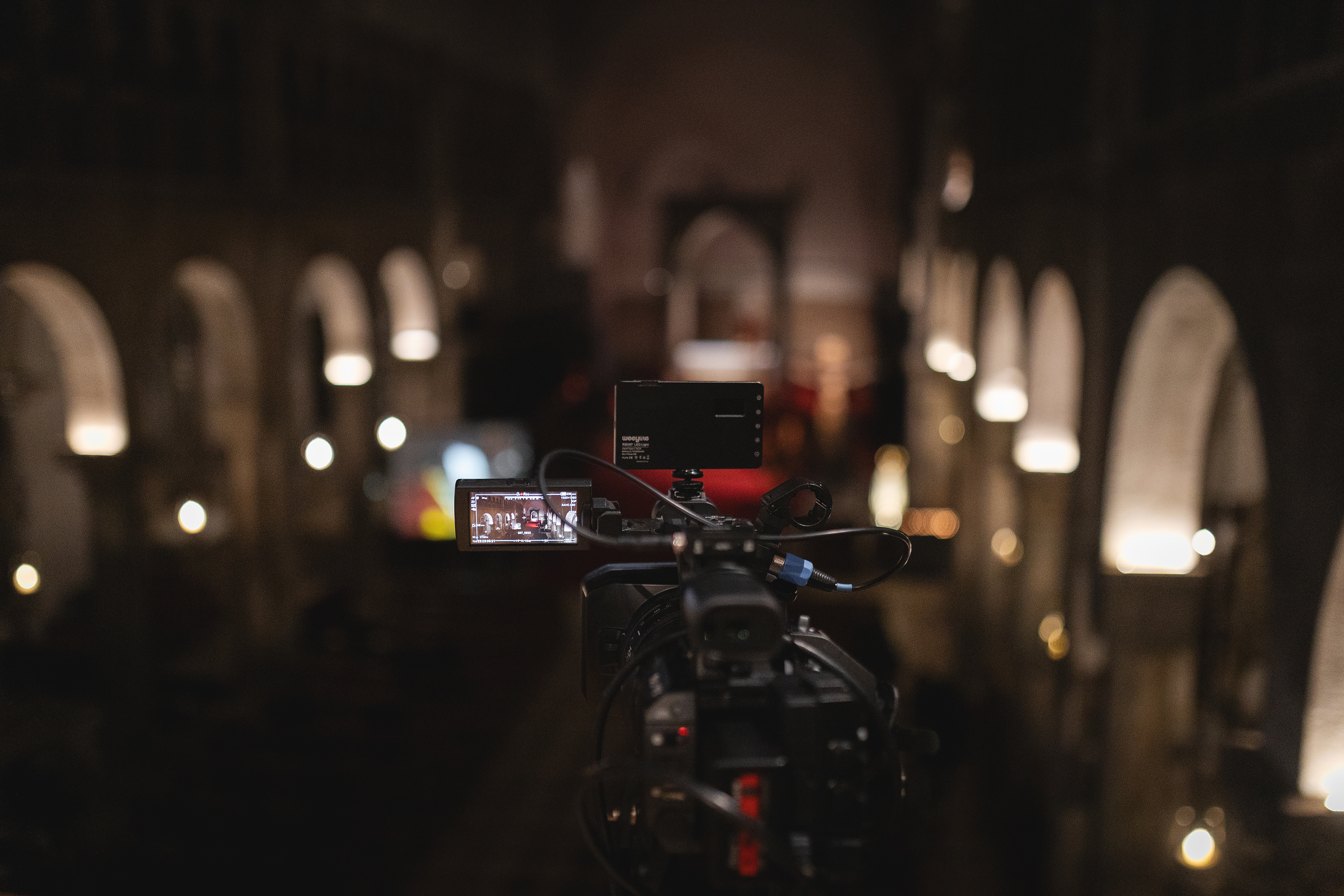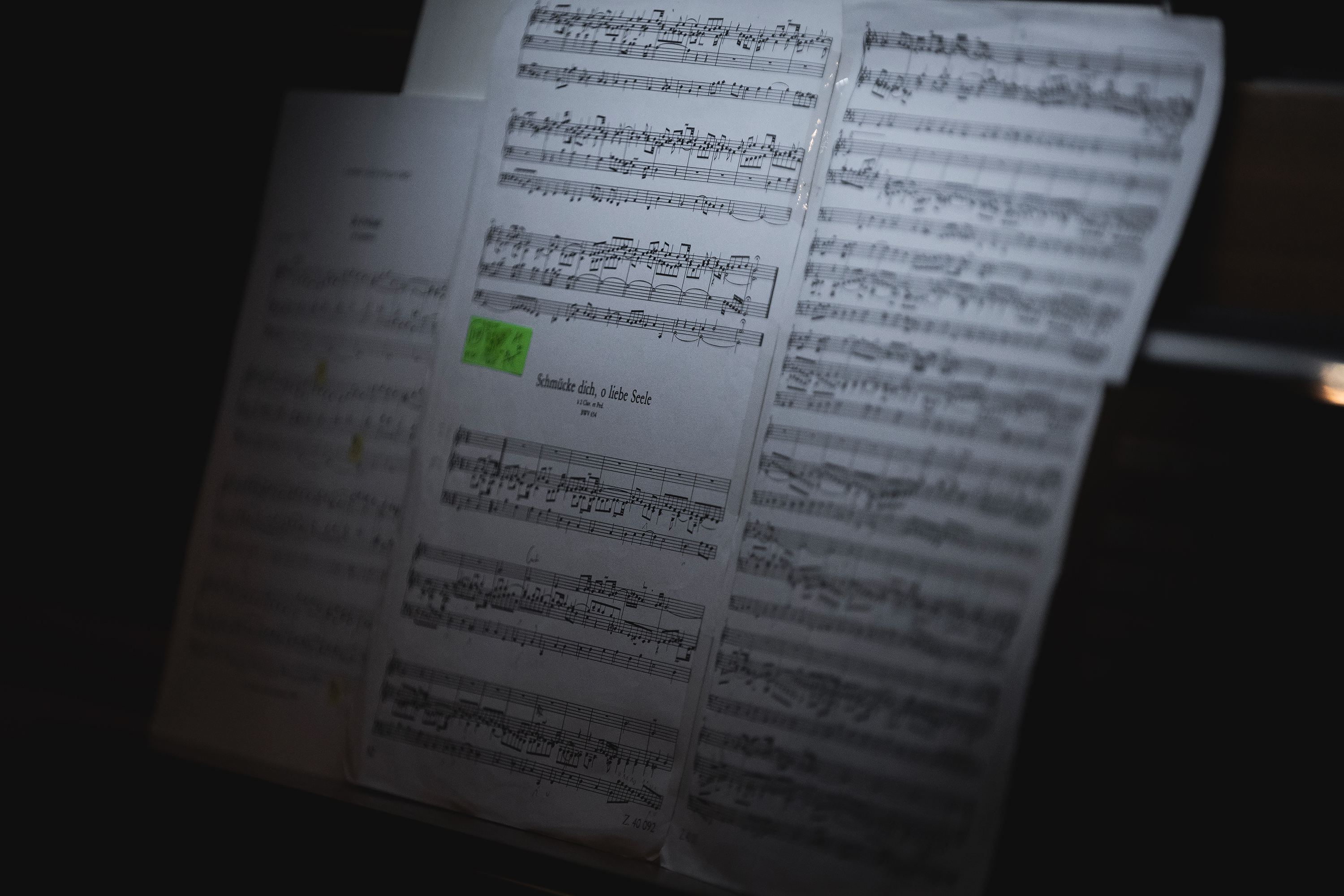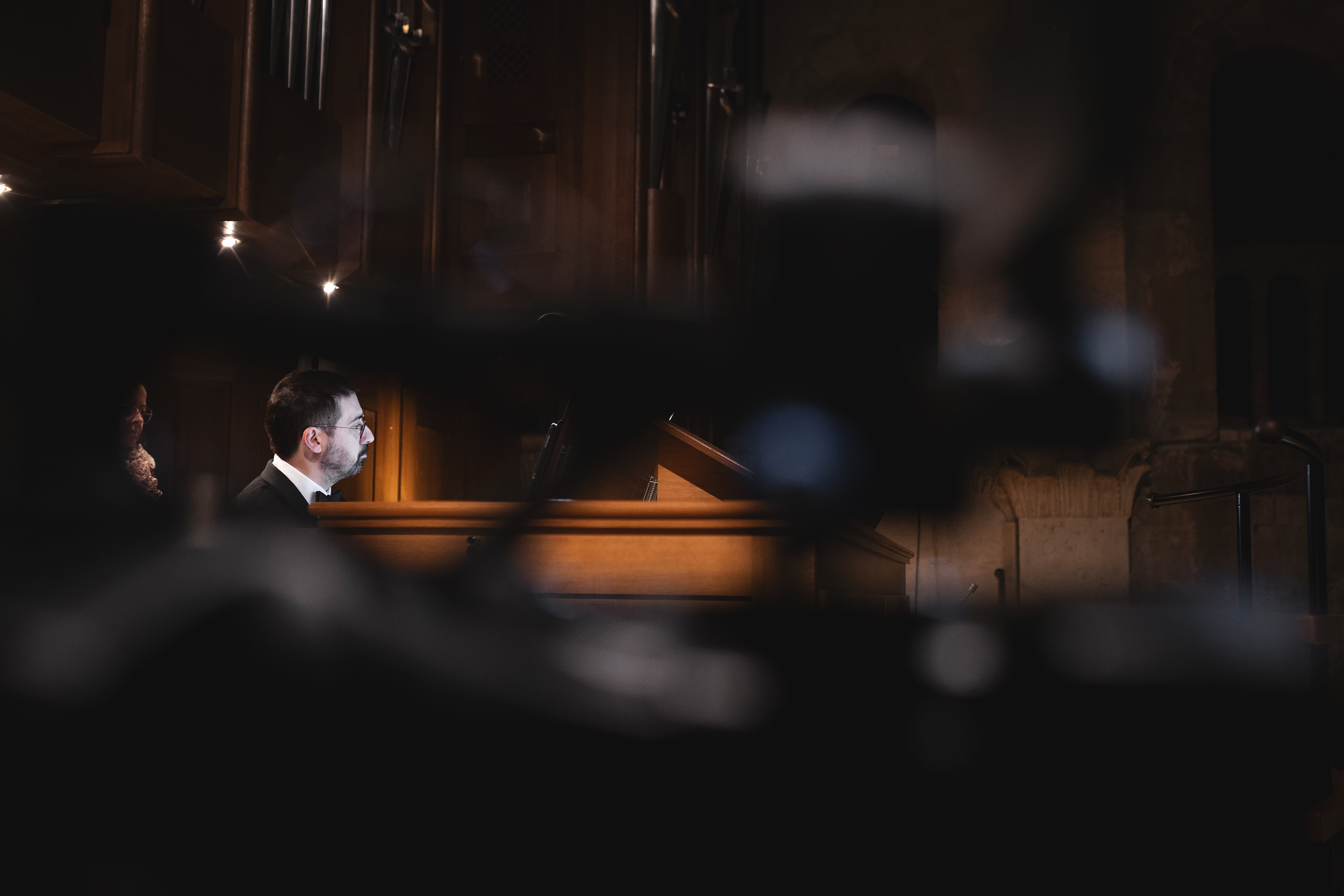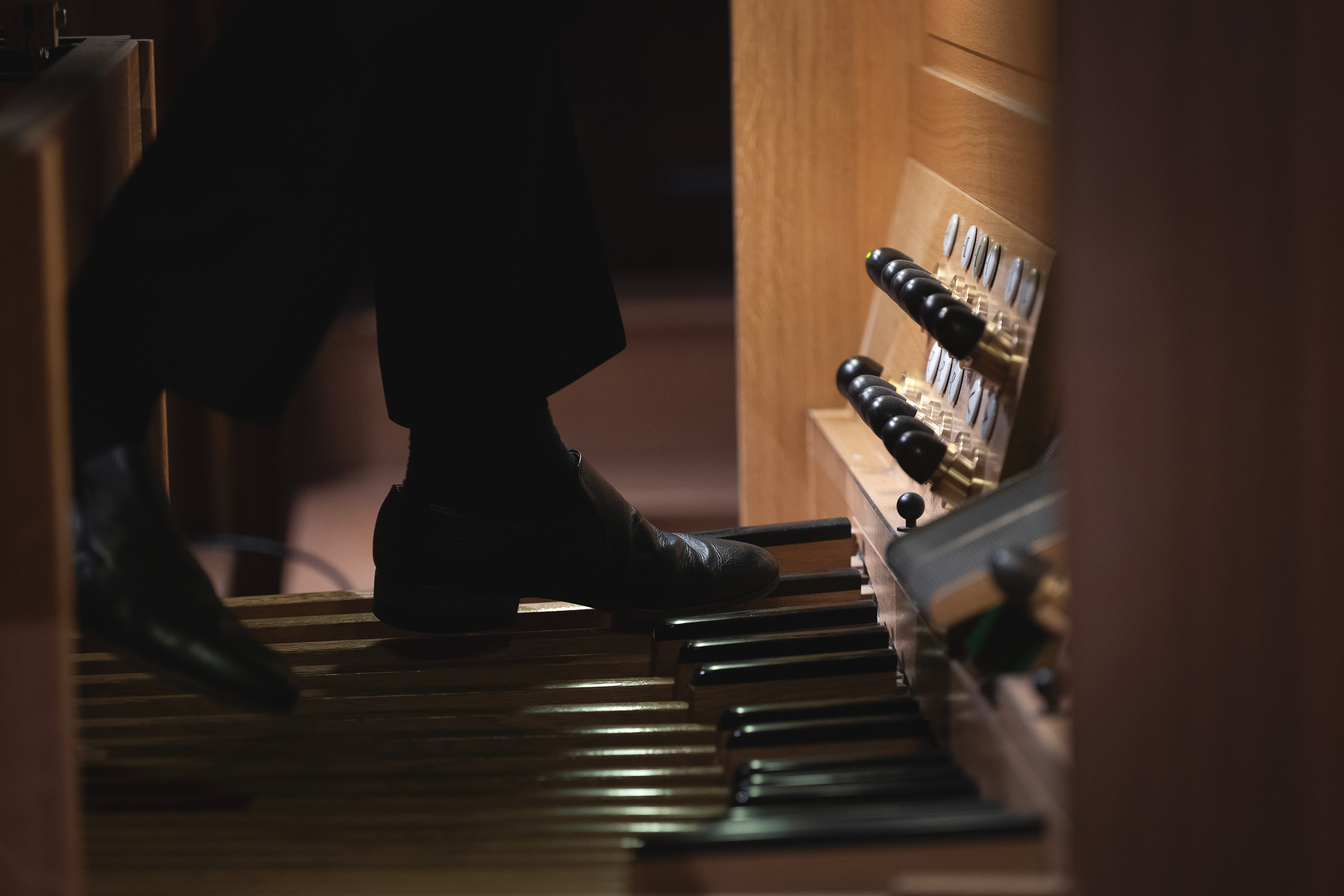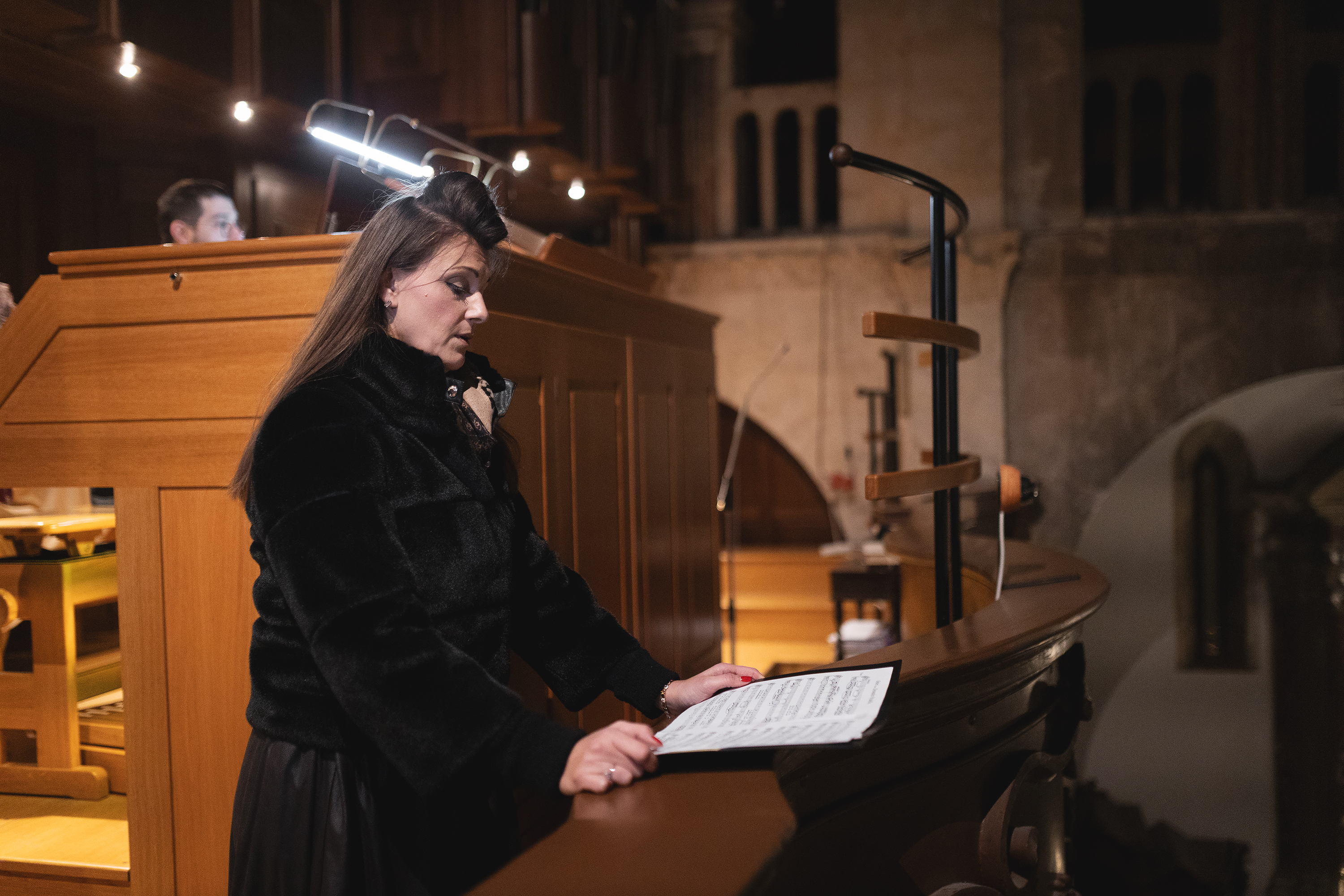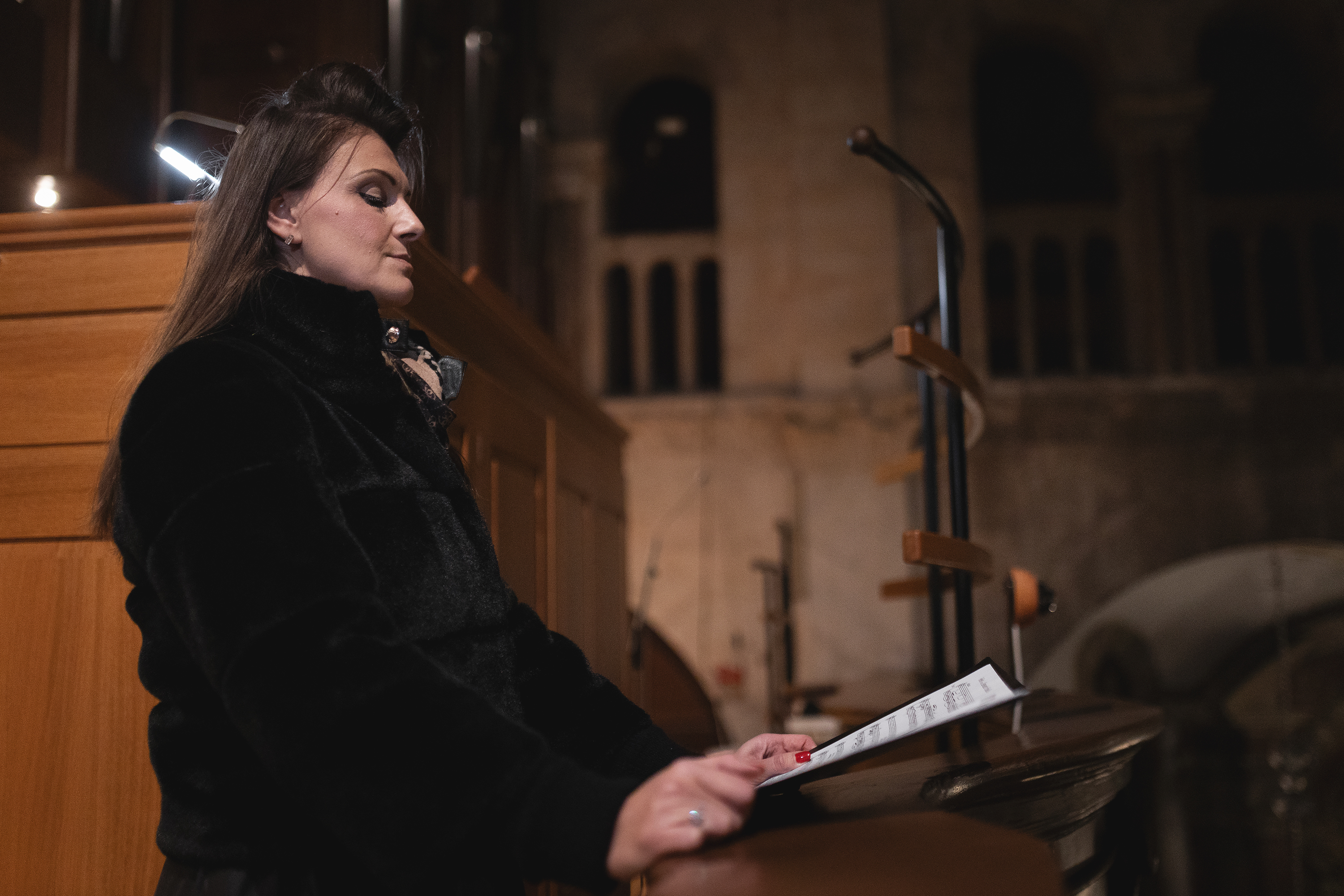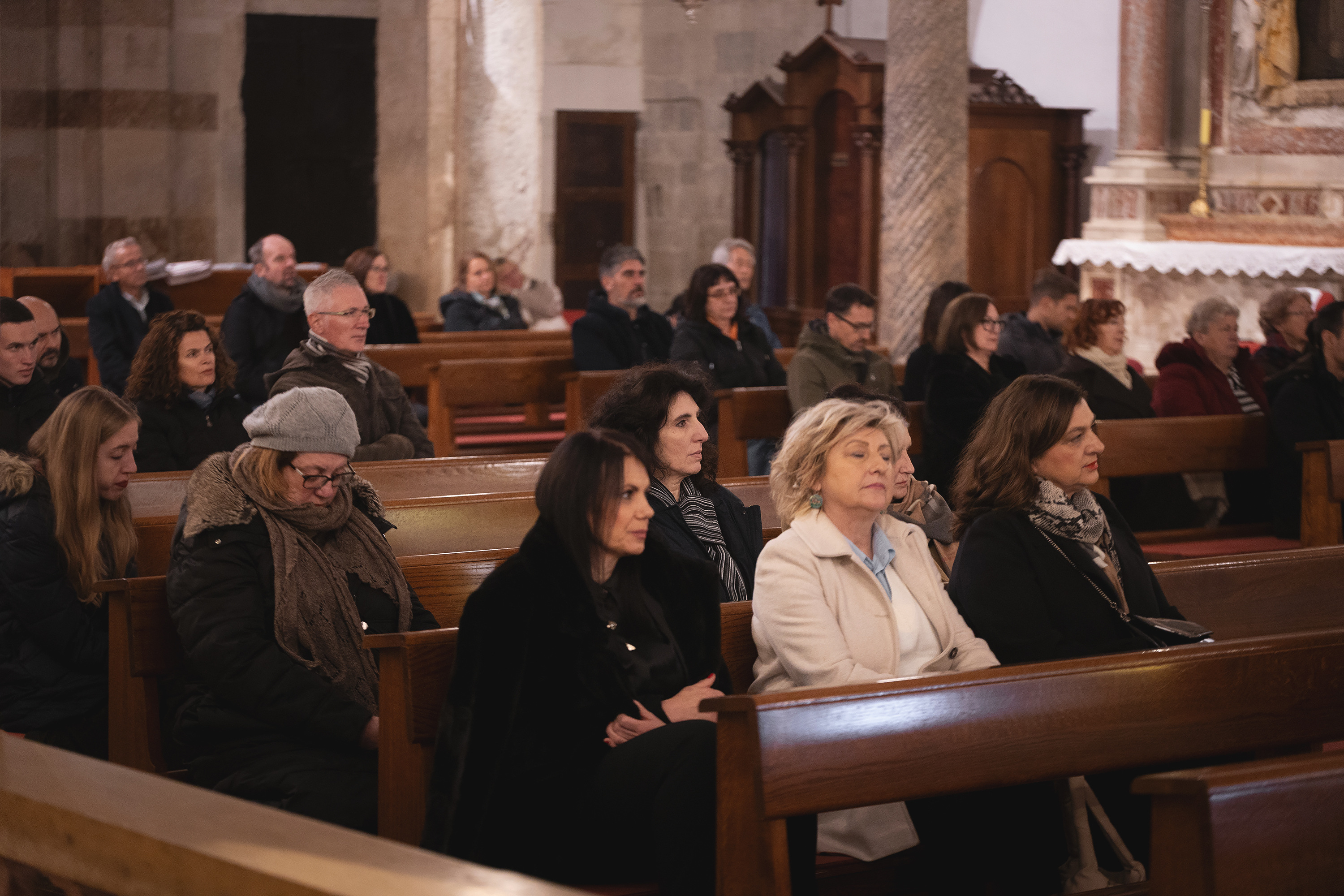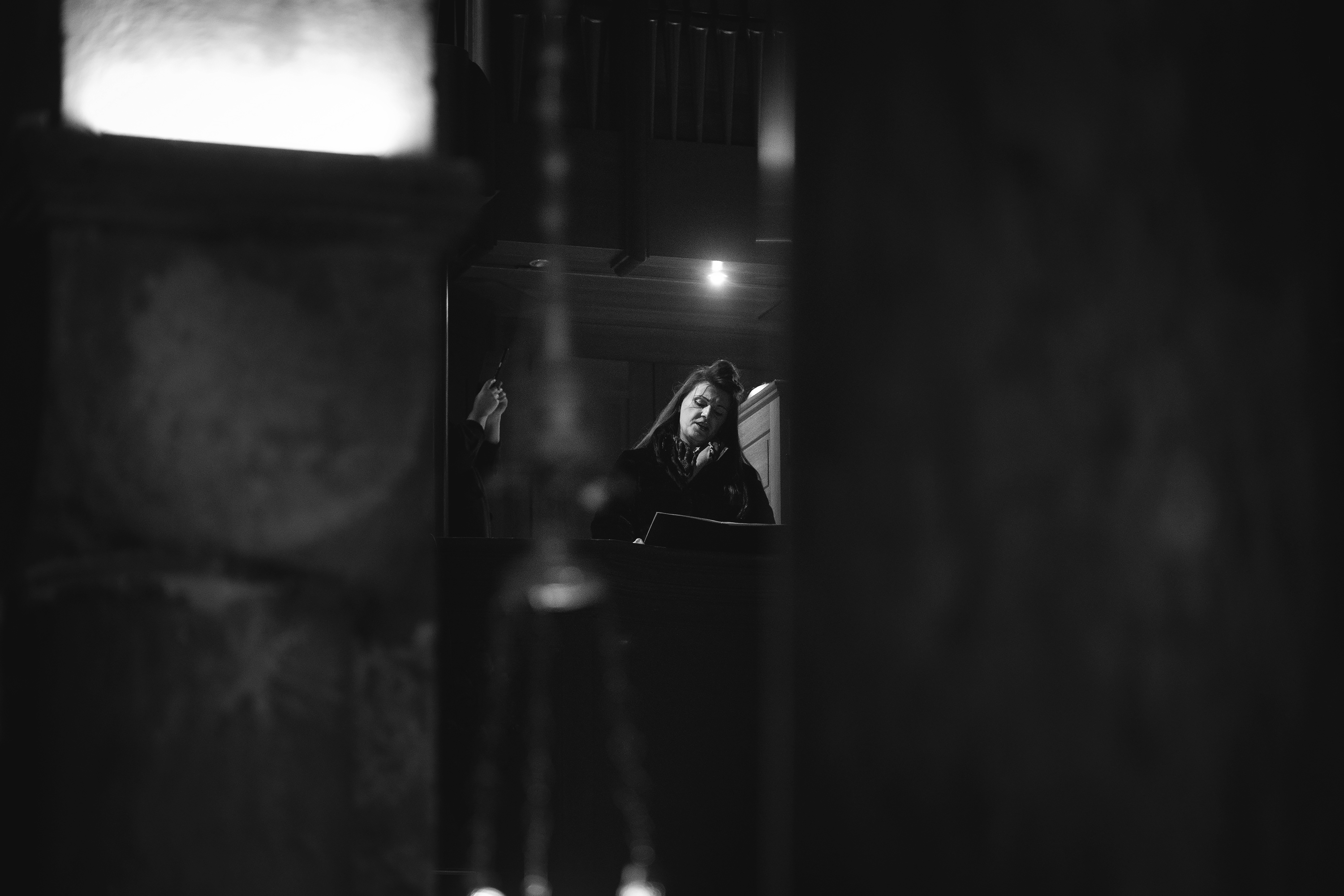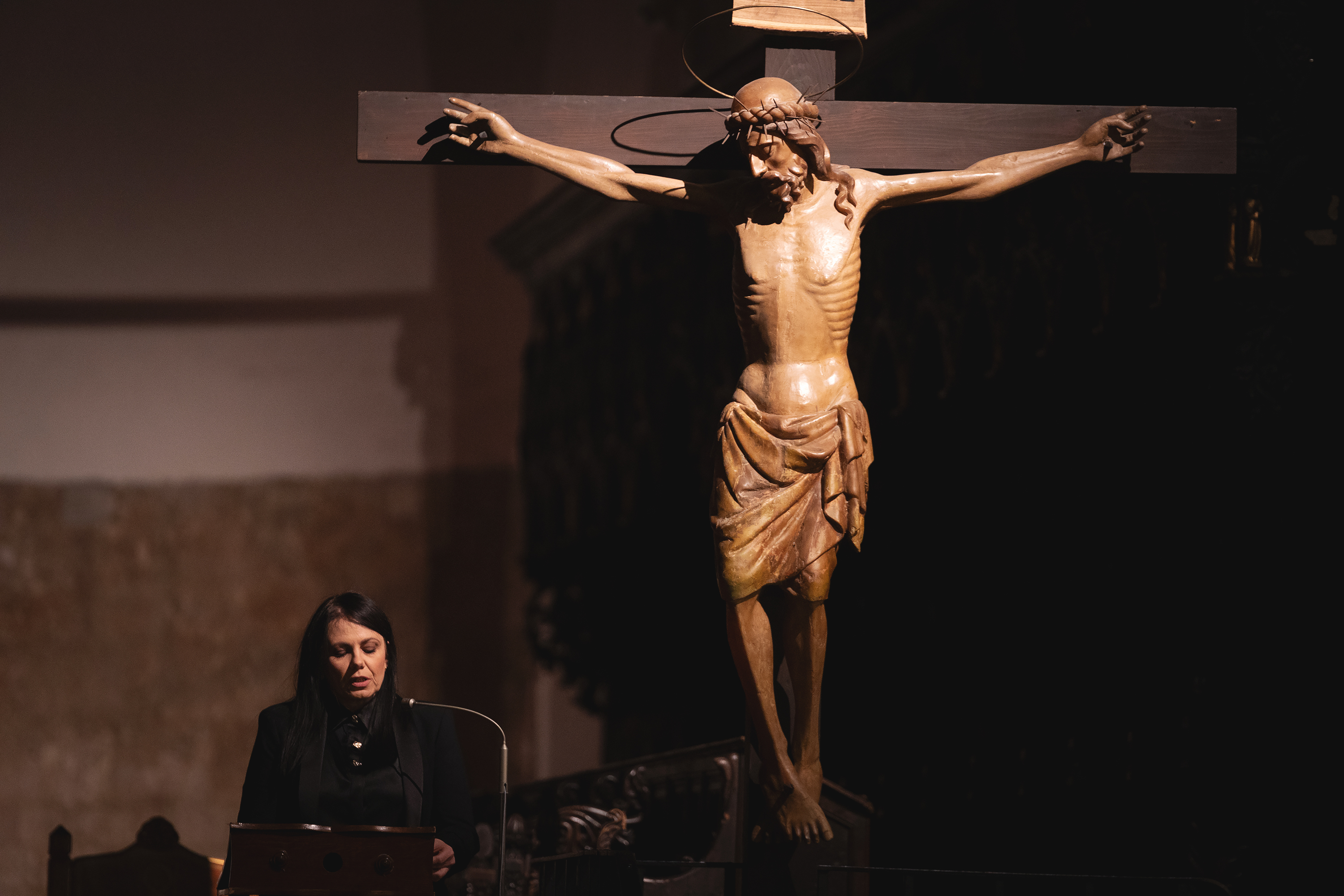ADVENT CONCERT FROM NERA GOJANOVIĆ AND PAVAO MAŠIĆ 15. 12. 2024.
15.12.2024
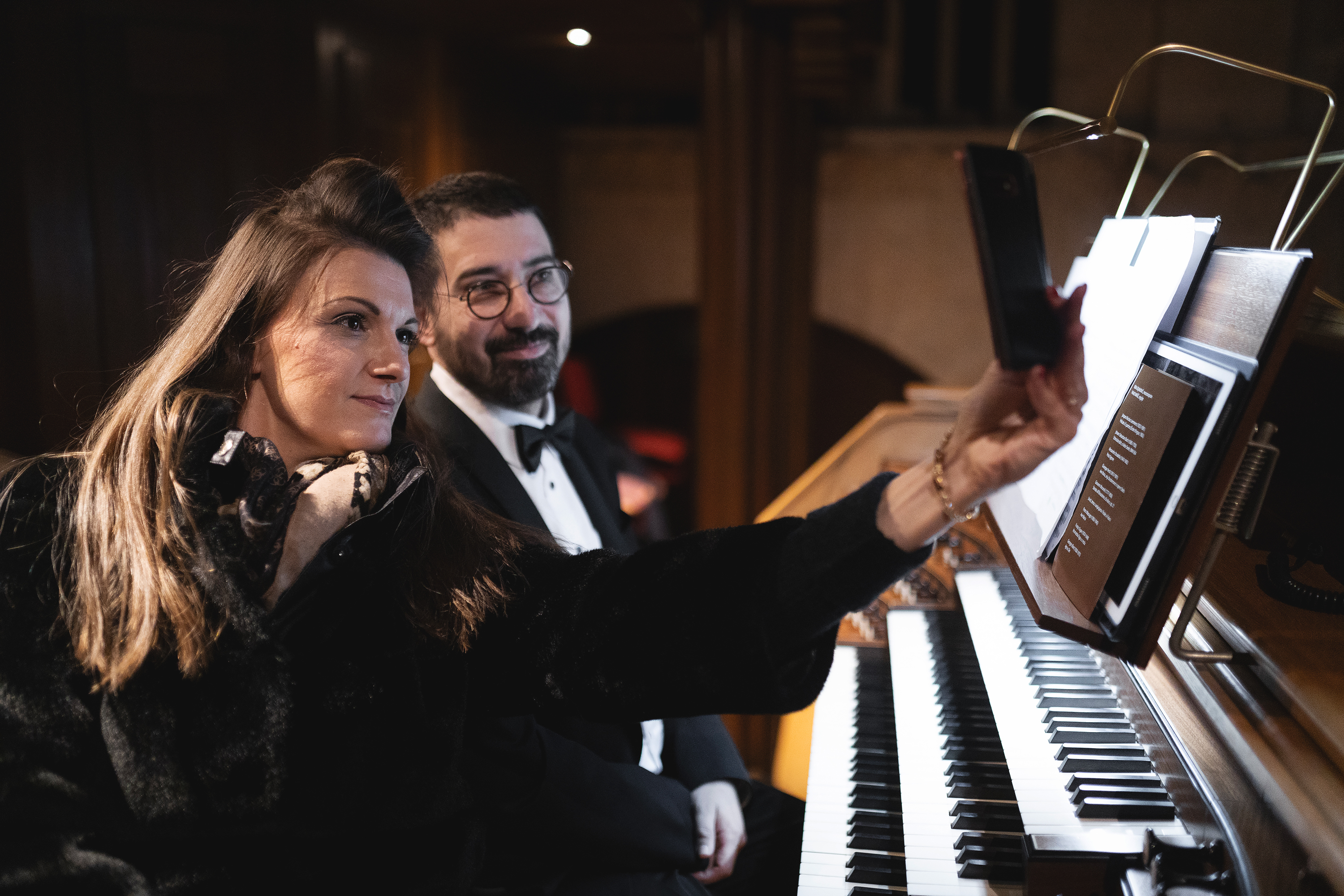
Pavao Mašić, a distinguished Croatian organist, and mezzo-soprano Nera Gojanović performed an Advent organ concert at St. Anastasia’s Cathedral in Zadar on Sunday, December 15, 2024. Organized by the ‘Ars Organi’ association and the parish office of St. Anastasia’s Cathedral, this was the second of seven planned concerts within the 2nd "Organs of St. Anastasia" Festival.
The concert was held as a contribution to the musical and meditative spiritual preparation for Christmas, as well as in memory and honor of St. Zoilo, on the eve of his feast day, December 16. St. Zoilo is one of Zadar’s patron saints.
Pavao Mašić, a globally recognized organist and harpsichordist with an impressive biography, had previously performed an organ concert at St. Anastasia’s Cathedral on November 23, 2024, on the eve of St. Chrysogonus’ feast day. This concert marked the beginning of the 2nd "Organs of St. Anastasia" Festival (2024/2025 season). The primary role of the organ is to elevate liturgical celebrations, and through these concerts, the ‘Ars Organi’ association and the parish office of St. Anastasia aim to promote and popularize organ music and the instrument itself.
"I truly enjoy playing the organ in Zadar’s cathedral because it is like a ‘big sister’ to the organ in St. Mark’s Church in Zagreb’s Upper Town. The same builder, Wolfgang Eisenbarth, built a slightly smaller organ there, adapted to the church space. The volume of St. Anastasia’s Cathedral is much greater, the intensity of the sound is rich, and there are numerous possibilities for sound combinations across its three manuals—one of which is played with the feet. The organist is constantly engaged, but it is a true treasure to explore all these tones," Mašić shared, emphasizing the acoustics of the cathedral, the space, and the organ itself.
"An organ is essentially a building within a building, so when I play, I try to listen to the space. It is crucial that such an instrument is in constant use. This became very evident in St. Mark’s Church in Zagreb, where the organ was silent for four years due to the earthquake. Even though many pipes weren’t physically damaged, you can still sense that they hadn’t been played. Every concert, every performance, every Mass accompanied by the organ is beneficial because it keeps the instrument in use. Moreover, it is important that the organ brings people together—singers, musicians, and audiences who get the opportunity to hear the splendor of Zadar’s organ."
During Advent, Mašić performed a repertoire centered mostly on Marian themes, featuring German and Italian composers, to inspire introspection and reflection—an expected sentiment during the Advent season. Pavao Mašić is the principal organist at St. Mark’s Church in Zagreb, a professor of organ and harpsichord at the Academy of Music in Zagreb, and the principal opera organist at the Croatian National Theatre (HNK) in Zagreb. He has released five albums and won eleven Porin awards. He is the artistic director of the "Organs of St. Mark" Festival and the director of the Summer Organ School in Šibenik. His performances take him around the world, and through his efforts, many renowned international musicians have visited Croatia for the first time.
Mezzo-soprano Nera Gojanović expressed her joy in performing in a sacred space, stating: "There is something special about the ambiance, the sense of spiritual peace I feel in a church, and the magnificent acoustics of St. Anastasia’s Cathedral, which is crucial and adds a unique charm to the sung-spoken language." Gojanović is a music and music-theatre consultant at the Šibenik Theatre, where she initiated a concert season, a series showcasing Šibenik musicians, and two classical music festivals. She is a member of the Croatian Society of Music Artists.
Alessandro Stradella (1643-1682)
Pieta Signore
Giuseppe Verdi (1813-1901)
Ave Maria (Desdemona’s aria from Otello)
Giovanni Morandi (1777-1856)
Sonata all’Elevazione u Es-duru, Op. 21
Introduction, Theme with Variations, and Finale in F major
Pietro Mascagni (1863-1945)
Ave Maria
Franjo Dugan (1874-1948)
Chromatic Fugue in C minor
Georges Bizet (1838-1875)
"Zadar’s cathedral takes pride in its Romanesque beauty and magnificent classical instrument—the organ. These massive organs produce an exceptionally refined sound, thanks to their labial pipes. Designed in the French 19th-century style, they feature 56 registers and are among the largest church organs in Croatia—the third in size but the first in quality. Entirely handcrafted, they embody the mechanical tracker action of the traditional Eisenbarth organ workshop from Passau," stated Dragan Pejić, the cathedral’s organist.
Before the start of the concert, Jolida Klarić addressed the attendees on behalf of the organizers. "In the wish that, along with the liturgical celebrations, in the cathedral of St. More than a year ago, a beautiful story began, the festival 'Orgulje St. Stošije' which was initiated by the association 'Ars Organi' in cooperation with the parish office of St. More. We want to present our citizens with organ concerts on the occasion of the celebration of our patron saints, who are solemnly honored in our cathedral and on major holidays, and in the summer months to further enrich the cultural life of the city of Zadar," said Klarić. Namely, during the summer of 2024, three organ concerts were held by world-famous musicians, Matthias Havinga, Paul Fey and Daniel Roth. Klarić thanked Don Josip Radojica Pinčić, pastor of the Cathedral of St. Stošija and Zadar Archdiocese, for supporting this enrichment of the musical life of the cathedral and the city of Zadar.
About the life of the early Christian martyr St. Zoila
St. Zoilo is the least known and somewhat forgotten patron saint of Zadar, and Klarić presented his biography at the beginning of the concert evening. St. Zoilo was a priest who lived penitently in a hut near Aquileia in the 3rd century, near today's Trieste. On an old copy of a Martyrology from 1596. writes: "Zoilo was a priest from Aquileia who buried the body of the martyr Krševan and many others who suffered for their faith and Christ".
For the persecution of the first Christians in the time of Diocletian, Zoilo exposed himself to do a corporal work of mercy, to bury the dead. He died with a reputation for sanctity and was buried in the church in Aquileia, where his cult quickly spread. It is said that he was a 'confessor', a confessor of faith. After the invasion of the Huns and the destruction of Aquileia in 452, Zoil's powers were transferred to the diocese of Udine.
Veneration of St. Zoila was always celebrated with the highest honors in the Zadar Cathedral. There are original documents about this, e.g. Compendium of services and ceremonies in Zadar Cathedral throughout the year. On the eve of the feast of St. Zoila's cathedral was ringing, calling people to a prayer gathering. The reliquary of St. was opened. Zoila. In the Archives of the Zadar Archdiocese, in the State Archives in Zadar and in the Scientific Library in Zadar, there is information that almost every church in Zadar had a picture or statue in honor of St. Zoila, which shows how much the people of Zadar revered St. Zoila.
St. Zoilo was the protector of the poor population of Zadar, the townspeople who lived in the center of the city within the ramparts. He was the protector of the small and disenfranchised, in the time of epidemics and difficulties for man. On December 13, 2020, the retired Zadar Archbishop Želimir Puljić brought the relic of St. Zoila to the parish church, bl. Alojzija Stepinac at Bilo Brig in Zadar.
"The people of Zadar were influenced by St. Zoila through the centuries and solemnly honored him. Today, our task is to preserve the heritage of life of the Archdiocese of Zadar. Let the concert in preparation for Christmas be our contribution to the revival of the veneration of St. Zoila and the preservation of the tradition of our Church", said Klarić, wishing that hearts would be encouraged to do good, especially towards the poor, following the example of St. Zoila. In conclusion, she said the intercessory prayer of St. To Zoil: "God, you taught the Church that all your law is in love for you and your neighbor. Let us follow the example of St. Zoila, do not tire of doing good and doing deeds of mercy, so that we may be counted among the blessed in your Kingdom. Through Christ our Lord. Amen".
